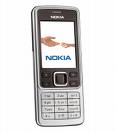Learning Portfolio Item One
Question One
- Design………………………………………….Design is “the act of of working out the form of something” (wordnet.princeton.edu/perl/webwn). It can be said to be the decoration on the cake, however it is really the foundation of any webpage, document or powerpoint presentation. According to Reynolds (2003), “the best designs are so well donethat the desin is never even noticed. The way in which one designs is based upon the topic, objectives, key messages and audience (Reynolds, 2003)
- Story……………………………………………………………Storytelling according to cognitive scientist Mark Turner is “narrative imagining” a key instrument of thought.
- People are “wired” to tell and receive stories. (Reynolds, 2003)
- Storytelling became synonymous with fiction but can also be based on real events
- Presenting learning material in narrative form can make learning illuminating, engaging and memorable.
- Symphony………………………………………………………………………..”in the ‘conceptual age’ synthesis and the ability to use seemingly unrelated pieces to form and articulate the big pictureis crucial even a differentiator” (Reynolds, 2003).
- The best presenters can illuminate the relationships that we may not have seen before such as the “relationships between relationships”.
- Symphony requires that we become better at seeing-truly seeing in a new way.
- Symphony requires people to recognise patterns and be skilled at seeing nuances and simplicity. (Reynolds 2003)
- Symphony is about utilizing “the whole mind-logic analysis and synthesis, to make sense of our world” (Reynolds, 2003)
- Empathy……………………………………………is about putting yourself in the position of others.
- It involves an understanding of nonverbal cues of others and your own
- Good designers put themselves in the position of the user, customer or audience
- The empathetic presenter can make adjustments based on higher reading of the audience.
- Play………………………………………………..the conceptual age is about play
- Playfulness and humour can go along way toward makinng a presentation more palatable
- According to Kataria, laughing people are more creative people. They are more productive people (cited in Reynolds, 2003)
- Meaning……………………………………………making a presentation is an oppertunity to make a small difference to the world or community.
- Sharing your expertise your story with others, connecting with someone by teaching something new or sharing that which is important to you with others can be rewarding.
“Design is a visual language that is built on fundamental principles and elements” (Evans and Thomas, 2008, p.1). Powerpoint presentation design is an important aspect of any presentation. It is the foundation from which the presentation is built upon. Presentation design determines how effective one’s powerpoint presentation is. From colour to shape to graphics, design plays an important part in emphasising the meaning, messages, objectives and topics to your target audience. When designing an effective presentation it is important to outline a few aspects.” state the main message of yyour presentation, list the objectives you hope to acheive via the presentation and describe audience characteristics thatcmay influence the presentation” (McGraw, 1992, Appendices A) It is also important to consider, template or grid application, typography and graphic elements and special techniques such as bullet points and space utilization. Incorporating effective design technique can yield effective powerpoint presentations.
References:
Reynolds, G. (2008) Presentations in “The Conceptual Age”. In Presentation Zen: Simple Ideas on Presentation Design and Delivery Berkeley, CA: New Riders. pp. 14-19
McGraw, K.L. (1992)Creating Desktop Presentations that work. New Jersey USA Prentice Hall. Appendices A
wordnet.princeton.edu/perl/webwn
Learning Portfolio Item One
Question Two
My assigment 2 powerpoint presentation met two to three of the six aptitudes. For example design is met through the application of visual design element of colour, repetition through the utilization of rectangles and typography for headings and body texts, graphics ,in terms of pictures of fruits and vegetables matched text and convey the message of healthy eating and heirarchy -title at the top of the slide, then body text and pictures.

The presentation tells a story with an introduction, maqin body points and conclusion. It introduces the audience to healthy eating, then explains why healthy eating is important, what are the benefits of healthy eating and provides some tips for improving one’s diet and exercise regieme before restating the main points of the presentation.




the presentation did not address the aptitude of symphony as it was a simple matter whose relationships i.e. exercise, diet and preservation of health are simple relatonships. When designing for a specific audience the designer when designing powerpoint presentation the designer puts themselves in the position of the audience. For example designers may utilize the audience point of view to determine the number of dot points per slide, the length of the presentation and the number of graphics utilized in one slide.
The concept of Playwas addressed in the phrase “Summer is a great time to get fruity”. It adds a touch of humour to the presentation. The message or meaning of healthy eating was adequately portrayed by the text and graphics. The messages conveyed in the presentation give greater meaning to the powerpoint presentation.

Learning Portfolio Item Two (Activity)
A new slide theme design was applied to make the powerpoint more interesting and visually appealing. The summer theme matches the content of the powerpoint presentation.












Learning Portfolio Item 2 (Activity)
A1)
Presumed credibility- World Vision (See Links)
“Presumed credibility describes the extent to which a person believes something because of general assumptions” (Fogg, 2003, p.163) One example of presumed credibility on the web is World Vision a nonprofit organisation for International aid and charity. Many people assume nonprofit organizations are not seeking commercial gain therefore are more trustworthy. (Fogg, 2003, p.164) This is not based on fact, but has an effect when it comes to perceived Web credibility.
Reputed credibility- Dale Alcock Homes (See Links)
Dale Alcock Homes is an example of reputed credibility on the web as vthe website shows awards that the building company has acquired.
The disney movie website of Cars also won an award for best movie website for 2007 according to Web Marketing Association’s web awards.
Surface credibility -InteliHealth.com (See Links)
Surface credibility, perceived credibility based on inspection or first impression, is the most common form and comes about by experiencing the website first hand. Inteli health is an example of surface credibility as it features information based upon Harvard Medical School Consumer Health Information.
Earned credibility- ANZ Bank (See Links)
Earned credibility based on first hand experience is all about establishing an ongoing relationship between the Web user and the Web Site or operator. ANZ bank website is an example of earned credibility on the Web. It provides quick responses to customer service questionsand even allows you to speak with a financial advisor. this site recognises you have been there before and confirms transactions you make.
References
Fogg, B.J., (2003). Credibility and the World Wide Web. In Persuasive Technology: Using Computers to Change What We Think and Do. Amsterdam: Morgan Kaufmann, pp.147-181

This nokia mobile phone meets the aesthetic-usability effect principle
Learning Portfolio Item One Question 2 and Learning Portfolio Item 2 (Activity)
Aesthetic- Usability Effect
Product 1: The Ferrari
The Ferrari meets the aesthetic-usability effect principle as its sleek, sporty design entices the audience to think that it is a fast car with superior handling and gets you from point A to point B more easily than ordinary car such as a Voltzwagon. The aesthetically pleasing design of a Ferrari means people form relationships with the car even giving it a name (Lidwell, et al., 2003, p.18). The design of a car is important in the relationship that the consumer has with the product and the relationship other people have with the consumer in relation to owning the product.

Ferrari meets the aesthetic-usability effect principle

This digital camera meets the aesthetic-usability effect principle
Week 10 Question One
Posted on: June 2, 2009
Week 10 Learning Portfolio Item
Question One
Aesthetic-usability effect is a phenomenon which has been around since technology progressed. “The aesthetic usability effect describes a phenomenon in which people perceive more-aesthetic designs as easier to use than less aesthetic designs.” (Lidwell et al., 2003, p.18) For example some mobile phones or cameras are perceived to be easier to use based upon their aesthetically pleasing designs.
Aesthetic designs are perceived by people to be easier to use and have a higher probability of being used as opposed to design which are not aesthetically pleasing in design. Although the usability and design fults may be the same between aesthetic designs and non-aesthetic designs, people develop a more positive relationship with those products which are more aesthetically pleasing than those which are not. This may make people more tolerant of design faults and influence long-term interactions regarding quality and use. “Positive relationships between a person and a design results in an interaction that helps to catalyze creative thinking and problem solving.” (Lidwell, et al., 2003, p. 18)
References
Lidwell, W., Holden, K., & Butler, J. (2003). Aeshtetic-Usability Effect. In Universal Principles of Design. Massachusetts: Rockport. pp.18-19
Week 13 Question 3
Posted on: June 1, 2009
Week 13 Learning Portfolio Item
Question Three
Issues that influence the users’ perceived web credibility
- Content vs Advertisement distinguishability
- Multiple language availability
- Evidence of wellknown corporate customers
- Navigation
- Frequency of content updates
- Site responds to customer service questions and transactions
(Fogg, 2003, p.151 & 154)
Fogg, B. J. (2003). Credibilityand the World Wide Web. In Persuasive Technology: Using Computers to Change What We think and Do Amsterdam: Morgan Kaufmann Publishers. pp.147-181
Week 13 Question 2
Posted on: June 1, 2009
Week 13 Learning Portfolio Item
Question 2
Wikipedia is not accepted as a resource for study as the information posted on the site is not verified by an authoritive body. Anyone can upload information and edit it. Wikipedia is based upon the contributions of volunteers around the world. “Anyone with internet access can make changes to Wikipedia articles”. (Wikipedia Overview, 2009)
Wikipedia content, information, cross references and citations can be added according to the Wikipedia editing policies. Information must be of a certain standard to avoid misinformation and substandard information. “Substandard or disputed information is subjected to removal.” (Wikipedia, Overview, 2009) Newer articles to the Wikipedia article list are also subject to misinformation, unencyclopedic content and vandalism. Users need to be aware of this to avoid misinformation and obtain the relevant and valid information they require.
Credible Websites require credible authors and on Wikipedia this may not be guaranteed. If anyone can author a piece of information then they can also put into their articles misinformation. This is why it is important to evaluate the credibility of websites prior to noting their information.
Week 13 Question One
Posted on: June 1, 2009
Week 13 Learning Portfolio Item One
Question One
Credibility is the combination of trustworthiness and expertise. Credibility is also known as believability and is an intangible concept in the form of an individual perceptions of a person, object or piece of information. For example when students references resources on the web a student needs to find credible resources so that the evidence they present or the information they present is true and correct. For example utilizing online journals to retrieve information for an assignment.
It is important to evaluate credibility of websites as it provides the audience with an understanding as to what information is believable or not. (Montecino, 1998)Credibility of websites is so important as anyone who has the software can publish an internet site and upload all sorts of information, true or fictional. For example the world wide web is full of websites which have both credibile and non-credible information. Journal databases are one example of credible websites as they provide articles that have been peer reviewed and studies which provide evidence of proven facts. Website credibility is also important for website evaluation as it may determine whether people “embrace the sites cause, register personal information, makes purhases… or bookmark the site for return visits” (Fogg, 2003, p.148). A website’s credibility may depend on the operator for example government agencies or independant web publishers. Its important to note who the operator is when evaluating credibility. For example government agencies (.gov) or education institutions (.edu). Credibility of resources on the web is important to ensure correct information is presented.
References
Fogg, B. J. (2003). Credibilityand the World Wide Web. In Persuasive Technology: Using Computers to Change What We think and Do Amsterdam: Morgan Kaufmann Publishers. pp.147-181
Montecino, V., 1998, Criteria to evaluate the credibility of WWW resources. http://mason.gmu.edu/~montecin/web-eval-sites.htm Retrieved 1st June, 2009
Week 12 Question One-Summary
Posted on: May 31, 2009
“Performance load is the degree of mental and physical activity required to achieve a goal” (Lidwell et al., 2003). There are two types of loads which make up performance load, namely cognitive load and kinematic load.
Cognitive load refers to the amount of mental activity-“perception, memory and problem solving”-required to acheive a goal. For example, the evolution of computers saw the reduction in cognitive load with the advent of the graphical user interface. General strategies to reduce cognitive load include, “minimizing visual noise, chunking information, utilizing memory aids and automating computation-and memory intensive tasks” (Lidwell, et al., 2003) Clark also suggests omitting tangential stories and visuals to assist cognitive load in leaarning cenvironments (2008, p) .
Kinematic load refers to “the degree of physical activity-number of steps or movements, or amount of force required to achieve a goal” (Lidwell, et al., 2003). For example Samuel Morse designed Morse code to reduce kinematic load. “General strategies for reducing kinematic load include reducing the number of steps required to complete tasks, minimizing the range of motion and travel distances,and automating repetative tasks.” (Lidwell, et al., 2003)
Technology has allowed us to perform everyday tasks more easily, quickly and simply .
References
Lidwell, W., Holden, K., & Butler, J. (2003). Performance Load. In Universal Principles of Design Massachusetts: Rockport pp. 148-149
Clark., R.C. (2008) Building Expertise: Cognitive Methods for Training and Performance Improvement San Fransisco, CA, USA p.97